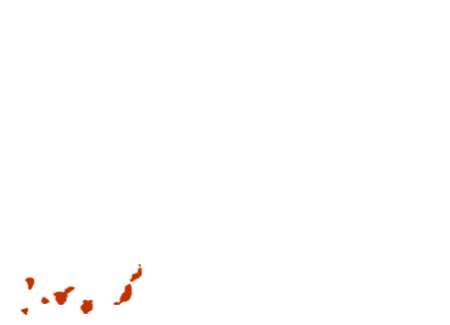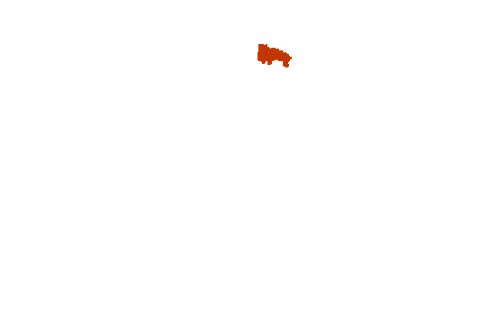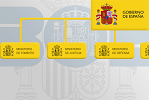Protection of patents and utility models
Content
What is a patent and what is a utility model? Obligations of the holder
Patents and utility models are industrial property rights, awarded by the state, which entitle the holder to temporarily prevent third parties from manufacturing, selling or using the protected invention for commercial purposes in Spain without their consent. In the event of an infringement, the holder can take legal action against such parties.
In exchange for an operating monopoly, the patent or utility model is made available to the public and the holder must describe their invention so as to allow an average expert in the subject to execute it.
The holder must also exploit the patent or utility model, either themselves or through a person to whom it has given authorisation for that purpose, by means of its operation in Spain or in a member territory of the World Trade Organization.
The patent must be exploited within 4 years of the date the patent application was submitted or within 3 years of the date on which the granting of the patent was published (the time frame that expires later is applicable).
If the patent is not exploited it may be subject to applications for compulsory licences and may expire.
Difference between a patent and a utility model
The utility model system protects inventions in which the inventive step requirement is less stringent than in the case of a patent. However, the duration of the protection is also shorter. There are also significant differences in the procedures whereby these rights are granted.
A utility model can protect an object or a product for which the configuration, structure or composition thereof gives it an advantage in its use or manufacturing. Process inventions, inventions involving biological material and those involving pharmaceutical substances and compositions are excluded.
Utility models are considered to be particularly suitable for SMEs, given that the procedure for granting them is simpler, faster and less costly than that for a patent.
What can and cannot be the subject of a patent or a utility model?
- The following can be the subject of a patent. A procedure, a manufacturing method, a machine or piece of apparatus or a product. The law states that this product can be composed of or contain biological material, and that procedures used to produce, transform or use biological material are permitted.
- The following can be the subject of a utility model. A utensil, instrument, tool, piece of apparatus and device, or part thereof, as well as a chemical product or foodstuff. However, a procedure, biological material or pharmaceutical substances and compositions can never be protected by a utility model.
- The following cannot be protected by a patent or utility model. Discoveries, scientific theories and mathematical methods, literary, artistic and scientific works, economic and commercial methods, computer programs, forms of information presentation, animal breeds and varieties of plant, inventions contrary to public policy or morality, the human body at all stages of formation and development, essentially biological processes for the production of plants and animals, and a mere DNA sequence without indication of a biological function.
Requirements for the invention
The invention must not be covered by the prohibitions laid down by the Law on Patents and, in addition, must be new, involve an inventive step and be capable of industrial application.
How much does it cost and where can patents and utility models be registered?
Initial registration fees
- For a patent, a fee of around EUR 1 200 must be paid to the OEPM.
- For a utility model, the application fee amounts to around EUR 100.
These fees apply regardless of the technical field or complexity of the invention to be registered.
A 15 % discount on the application fee is given if the application is submitted electronically.
The cost to be borne by the applicant in preparing the documents to submit the application must be added to this amount.
Maintenance fees
In addition, annual maintenance fees that increase gradually (for patents, from around EUR 18.48 for the third annual payment up to EUR 490 for the twentieth) are payable.
The amount of these fees ![]() is updated annually by means of the General State Budget Law and the updated fees are included on the Spanish Patents and Trade Mark Office (OEPM) website.
is updated annually by means of the General State Budget Law and the updated fees are included on the Spanish Patents and Trade Mark Office (OEPM) website.
Where can patents and utility models be registered?
It is possible to register patents and utility models:
- In person at the Spanish Patents and Trade Mark Office
 ;
; - At the regional industrial property information centres
 ;
; - At post offices;
- On the website
 , with a 15 % discount.
, with a 15 % discount.
Recommendations![]() : before submitting an application for a patent or utility model and to avoid wasting time and money on something that has already been invented, it is advisable to carry out a state of the art search. It is therefore recommended that you first investigate the technical field of the invention by performing a search in the database of inventions
: before submitting an application for a patent or utility model and to avoid wasting time and money on something that has already been invented, it is advisable to carry out a state of the art search. It is therefore recommended that you first investigate the technical field of the invention by performing a search in the database of inventions ![]() or by requesting that the OEPM
or by requesting that the OEPM ![]() perform such a search.
perform such a search.
How can a patent with effect in Spain be obtained?
A patent with effect in Spain can be obtained in one of three ways.
- At national level.
 The application is prepared in accordance with the requirements laid down by the Spanish Patent Law of 24 June 2015
The application is prepared in accordance with the requirements laid down by the Spanish Patent Law of 24 June 2015 .
. - At European level.
 Spain is a party to the European Patent
Spain is a party to the European Patent Convention, which makes it possible to obtain a set of national patents by submitting a single application to the European Patent Office (EPO).
Convention, which makes it possible to obtain a set of national patents by submitting a single application to the European Patent Office (EPO). - At the international level or under the PCT
 . Spain is a party to the Patent Cooperation Treaty (PCT)
. Spain is a party to the Patent Cooperation Treaty (PCT) . This system makes it possible to apply for protection for an invention in each of the Contracting States of the PCT by submitting a single application.
. This system makes it possible to apply for protection for an invention in each of the Contracting States of the PCT by submitting a single application.
It is not a procedure for granting patents and it does not replace the granting of national patents, however it does consolidate the international protection process: international PCT application.![]()
Duration of protection for the invention
Duration according to type
- Twenty years from the submission date, for patents.
- Ten years for utility models.
Once these time periods have elapsed, the invention is in the public domain and anyone can use it freely.
Exceptions
- Only in the case of patents for pharmaceutical and plant protection products is it possible to apply for what is known as a Supplementary Protection Certificate (SPC), which extends – for a maximum of 5 years – the protection granted to the marketed product once the patent has expired.
- In addition, an extension to the SPC for a further 6 months can be requested for paediatric pharmaceutical products.
Maintaining a patent or utility model
Once a patent or a utility model has been granted, it must be renewed every year by paying the corresponding fee or annual payment, from the third year following the filing date. The first 2 years are covered by the application fee. If the corresponding annual payments are not made, the patents or Models will expire and may be exploited by a third party.
Support for the inventor
Entrepreneurs – natural persons or SMEs
For Entrepreneurs who are natural persons or small and medium-sized enterprises (SMEs), the OEPM offers:
- a 50 per cent reduction in the fees paid per application;
- the report on the state of the art and examination;
- the first three annual payments (third, fourth and fifth).
An application for a reduction in fees must therefore be submitted together with the application for a national patent or utility model, along with proof that the applicant fulfils the definition of Entrepreneur and the definition of a small and medium-sized enterprise (SME).
Annual grant programme
The OEPM also has an annual grant programme![]() to help with the costs incurred by applicants for national patents and utility models, and for European or international patents, provided that they meet the requirements established by the call published annually in the BOE [Spanish Official State Gazette]. Further information relating to this assistance programme, along with other assistance granted by various Public Bodies and Autonomous Communities
to help with the costs incurred by applicants for national patents and utility models, and for European or international patents, provided that they meet the requirements established by the call published annually in the BOE [Spanish Official State Gazette]. Further information relating to this assistance programme, along with other assistance granted by various Public Bodies and Autonomous Communities![]() , can be found on the OEPM’s website.
, can be found on the OEPM’s website.
Information for each Autonomous Community












Andalucía Aragón Asturias, Principado de Balears, Illes Canarias Cantabria Castilla y León Castilla-La Mancha Cataluña Ciudad de Ceuta Ciudad de Melilla Comunitat Valenciana Extremadura Galicia Madrid, Comunidad de Murcia, Región de Navarra, Comunidad Foral de País Vasco Rioja, La
Legal and/or technical references
-
Standards relating to patents and utility models.

-
Fees for patents and utility models.

-
Leaflets about trade marks and trade names.

-
Information leaflets: Patents and utility models

-
Information leaflet: Basic questions about patents and utility models

-
Information leaflet: Protection of innovations in Spain

-
Information leaflet: El Servicio de 'Examinador de Guardia de Patentes’ [‘The “on-duty patent examiner” service’]

-
Information leaflet: What is a patent?

-
Information leaflet: Invenciones Implementadas por Ordenador [‘Computer-implemented inventions’].

-
Patent and utility model databases.

-
FAQs

-
Recommendations and tools for submitting the application











